What I've Learned from Shifting My Painting Process
From Digital Painting to Traditional Painting
In 2022, I shifted my painting process from digital or partially digital to entirely traditional due to worsening chronic migraine and wrist pain. It's one of my best decisions, so I'd like to share some insights with fellow artists considering a similar path.
Start Gradually
To make the process less daunting, I incrementally incorporated traditional techniques, like painting the background or adding hand-painted overlay textures on top of the digital paint, painting the characters and background separately, before making a complete painting on one paper/canvas.
More Space
Though my workspace is small, I squeezed in an additional table beside my main table. As I started using more art supplies and painting larger artwork, I also upgraded my folded table to a standing desk. You don't need a large studio or table for traditional painting, but you do need more space for a scanner, printer, and shelf to store your final art and art supplies.
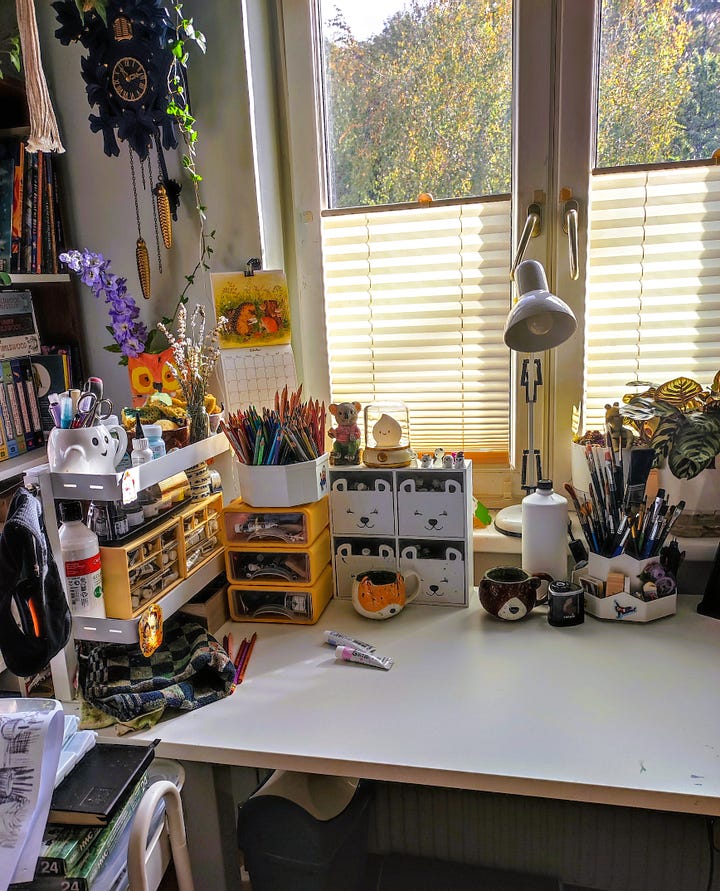
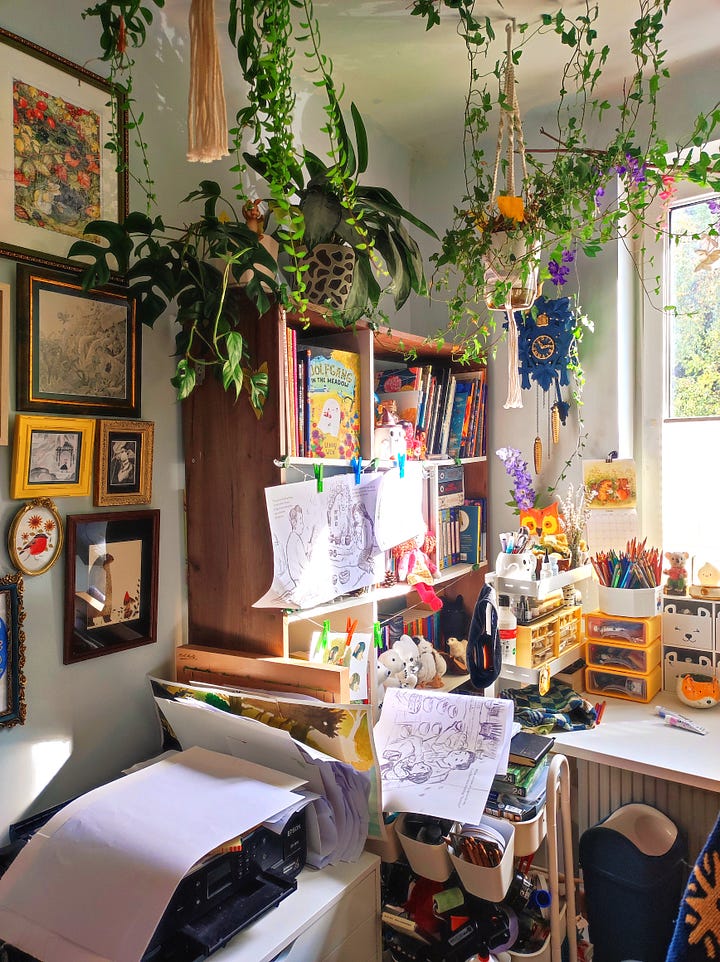
Be Patient
I won't lie; the beginning was frustrating. I made plenty of mistakes and my early efforts felt inadequate. Since I was pretty smooth painting digitally, I assumed it would be the same traditionally, and oh, how wrong I was. It's the same with any learning process; it takes time and practice. So, if you are struggling, you're not alone. Just keep at it!
Digital Edit is not 'Cheating'
Once, I saw a post by an artist claiming that editing traditional work digitally equals cheating. That statement initially made me feel guilty whenever I edited artwork digitally, but I found that this viewpoint doesn't make sense in the commercial illustration world. Digital editing is sometimes necessary and helpful, especially when multiple revisions are required. If editing is standard in photography and movies, I don't see any difference that should apply to illustration, even if you work traditionally.
No Excuses
Whenever notes started coming in, my initial reaction was, "Oh no!" Paint traditionally made revisions more daunting and longer. Sometimes, I had to completely repaint the entire spread, wasting days of work. But just because I choose to work traditionally doesn't mean it gives me leeway. Art directors might consider my work process, but most won't since it's a collective decision in the publishing team.
Mistake is Just Part of the Process
Fearing mistakes held me back for years, especially with the lack of an undo button or dealing with client revisions. But when I considered these worries, I realized that while mistakes may waste time and materials, they are not as severe as errors in other professions (i.e., scientist, doctor, driver, pilot, etc.). Accepting this perspective has helped me ease my anxiety. I still make mistakes and sometimes need to repaint them multiple times until I'm satisfied, but it's okay; no one gets harmed!
Nothing Should Be Too Precious
I often remind myself not to be overly attached to my work. Every stroke—intentional or not—could be too precious. I usually let the notes from the art director sit for a day before I execute them. The same goes for if I don't feel satisfied yet attached to the piece I am working on; I will let it sit for a day before starting over.
Listen to Your Body
Trying different mediums is always beneficial for improvement. But if you're a full-time illustrator, maintaining a healthy work process is crucial for long-term sustainability. If painting traditionally causes pain to your body, like how painting digitally caused pain to me, don’t force yourself. It’s so important to feel good physically and mentally to maintain the longevity of our careers.
Challenges
Some challenges will occur in addition to the ones I mentioned. Working on multiple projects will be more complicated, especially if you're disorganized like me. Unlike some artists who are really good at documenting meticulous notes for the palette they used, my chaotic brain can't stand that process. As a solution, I use labeled paint tray palettes for each project.
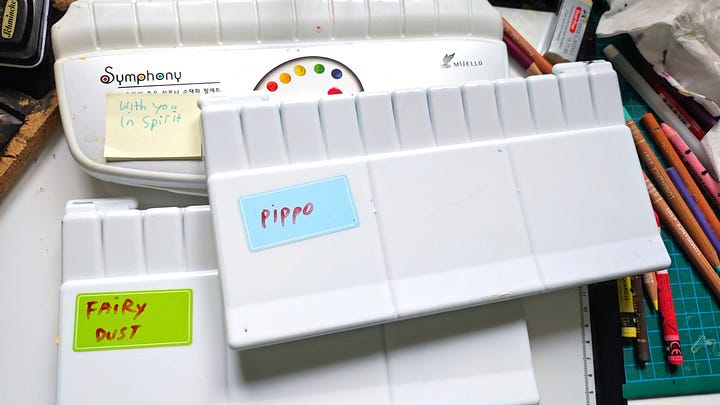
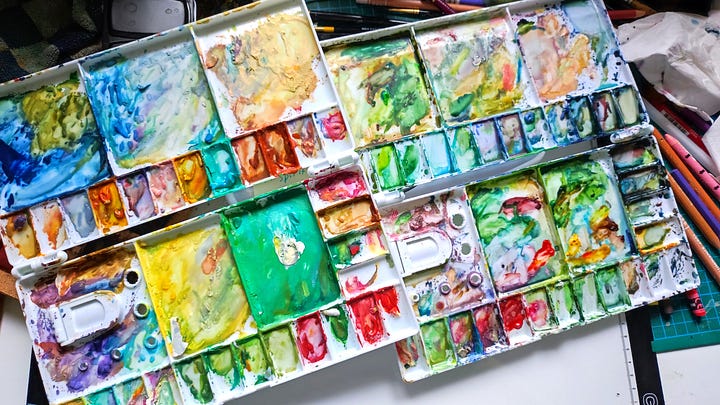
My Paint Trays Traveling poses additional challenges, so I keep a scanner and a light pad at my parent's place. Travel also means I can't work on multiple projects since I can't carry many art supplies in my luggage.
I am not the most knowledgeable, but hopefully, what I shared here will be helpful to someone, somewhere, somehow.
Intermezzo…
Since FAIRY DOOR DIARIES #1: Eliza and the Flower Fairies, written by Megan Mcdonald and published by Candlewick, will be out in less than one month, I want to share some process photos:
Imagine a door.
A teeny-tiny fairy door.
Now imagine it is magic.
Open the door.
To some, the low door in Eliza’s bedroom might look like an ordinary entrance to a crawl space under the stairs. But to a believer like Eliza of the Elves, it’s the door to the Land of UnderStair, a secret hideout all her own. In that crawl space, festooned with twinkling lights, Eliza keeps her favorite book, her collections of precious items, her stuffed animals, and her new diary. And in that crawl space is another door, a teeny-tiny one that can transport Eliza to a world of tangerine sun and lemon-pudding sky, a place where flower fairies perch on every bloom and a new flower springs up whenever you pick one. But in a far corner of that world, Eliza tries to pick a strangely beautiful flower—“Nooooo!” cries her friend Poppy—and things soon go terribly awry. Can a brave, wilting Poppy rescue Eliza from beyond the hedgerow before the Demon Wind steals all the flower fairies’ scents, leaving the snapdragons with no snap?



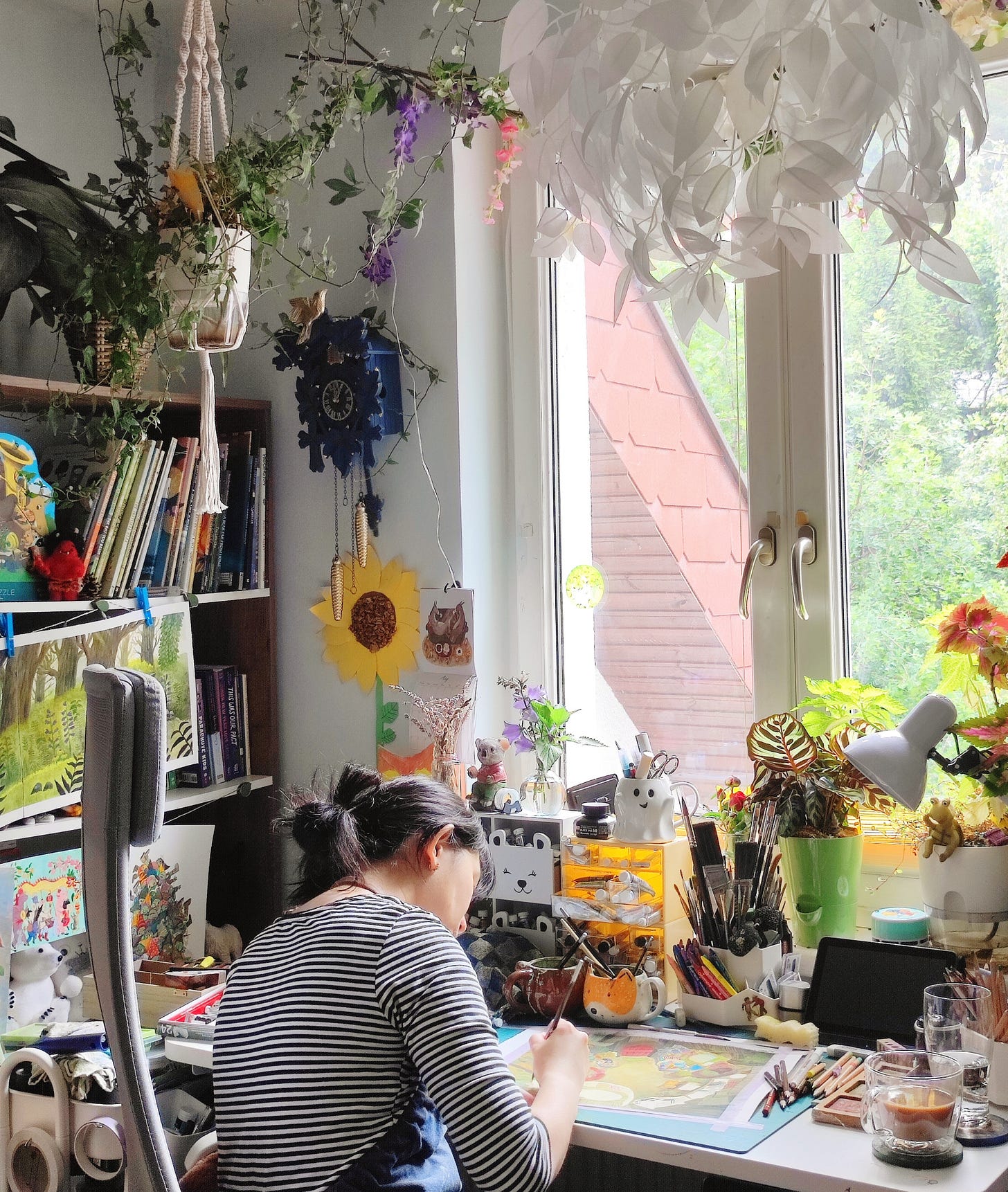

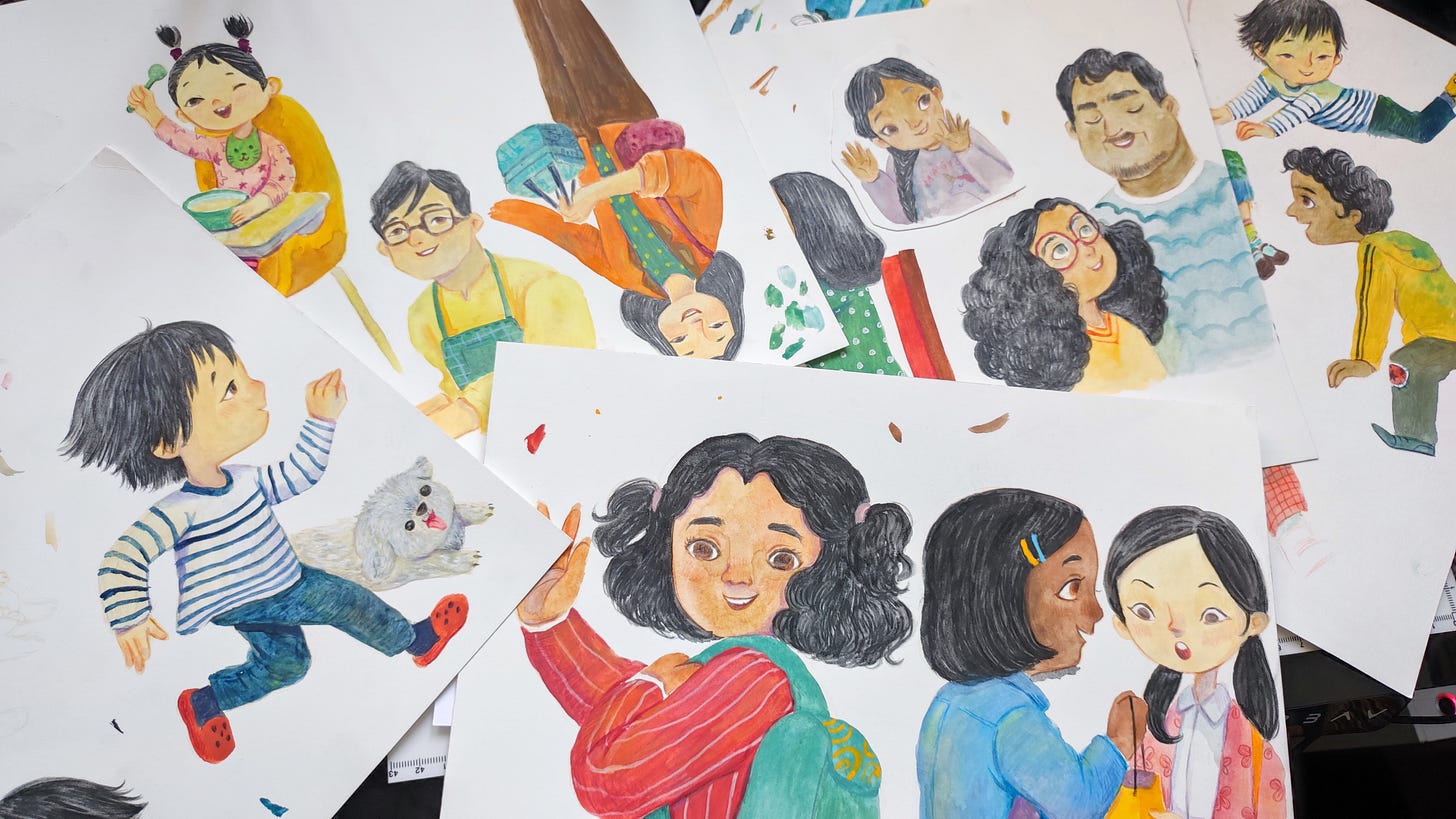

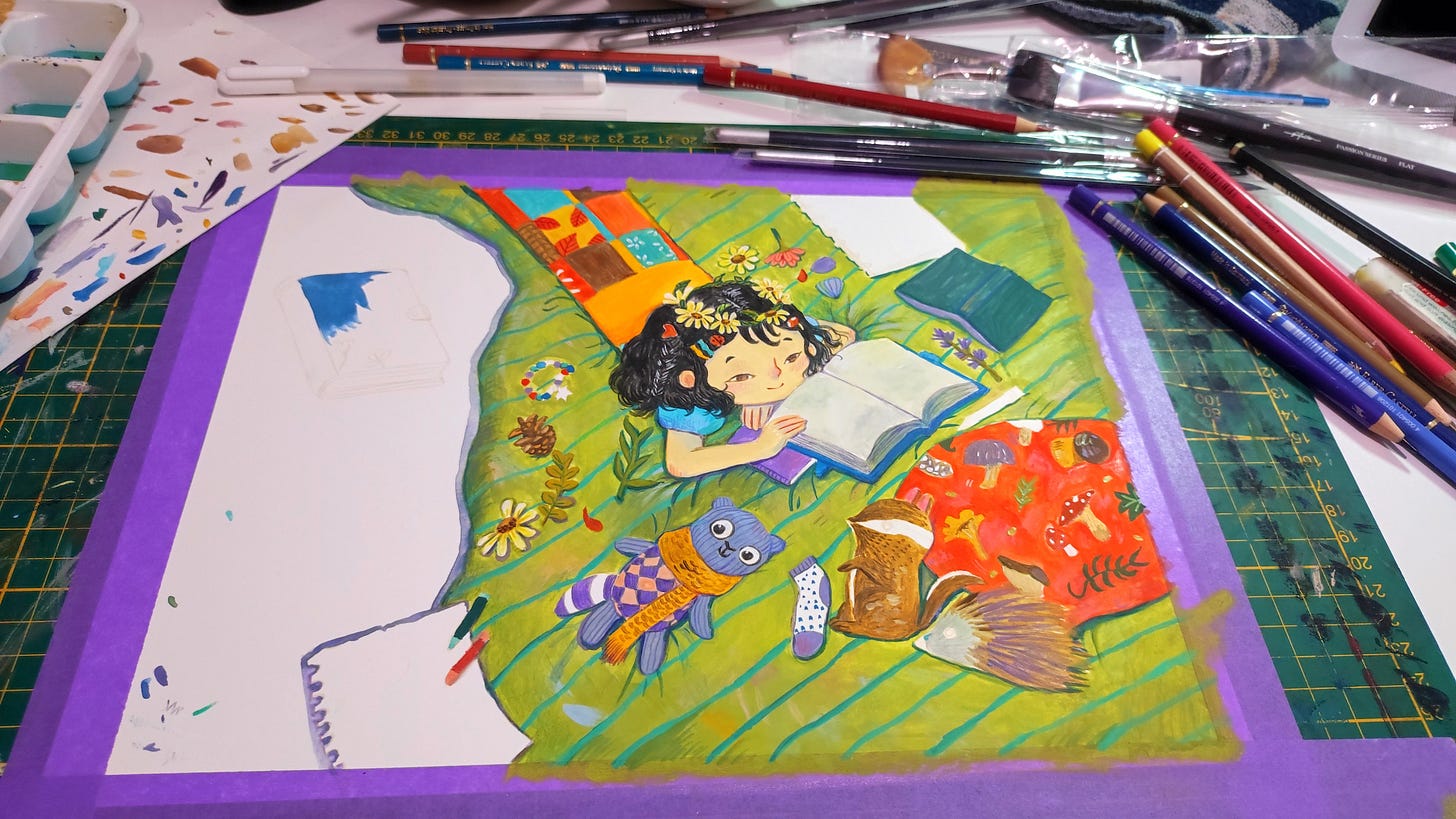
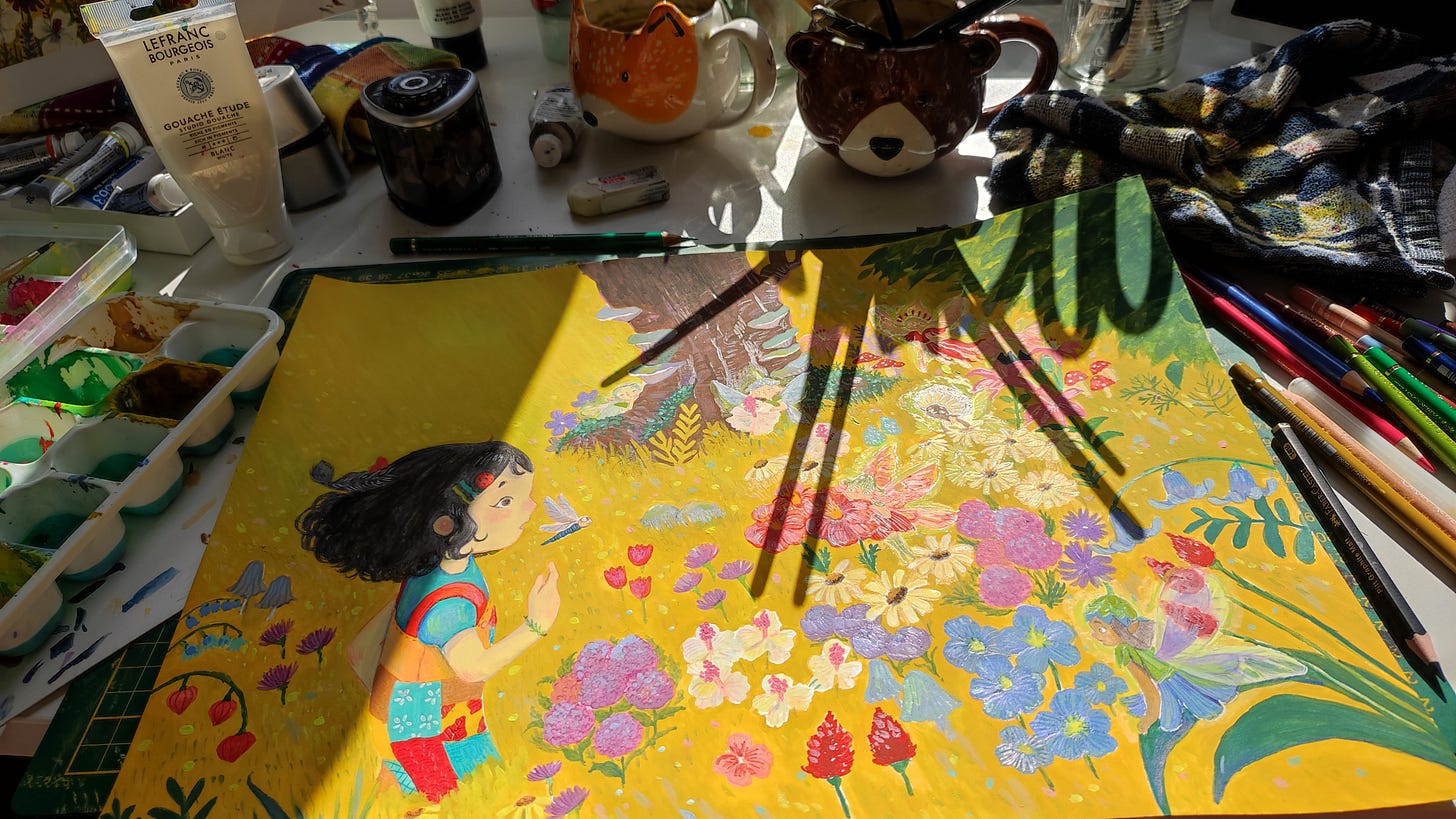
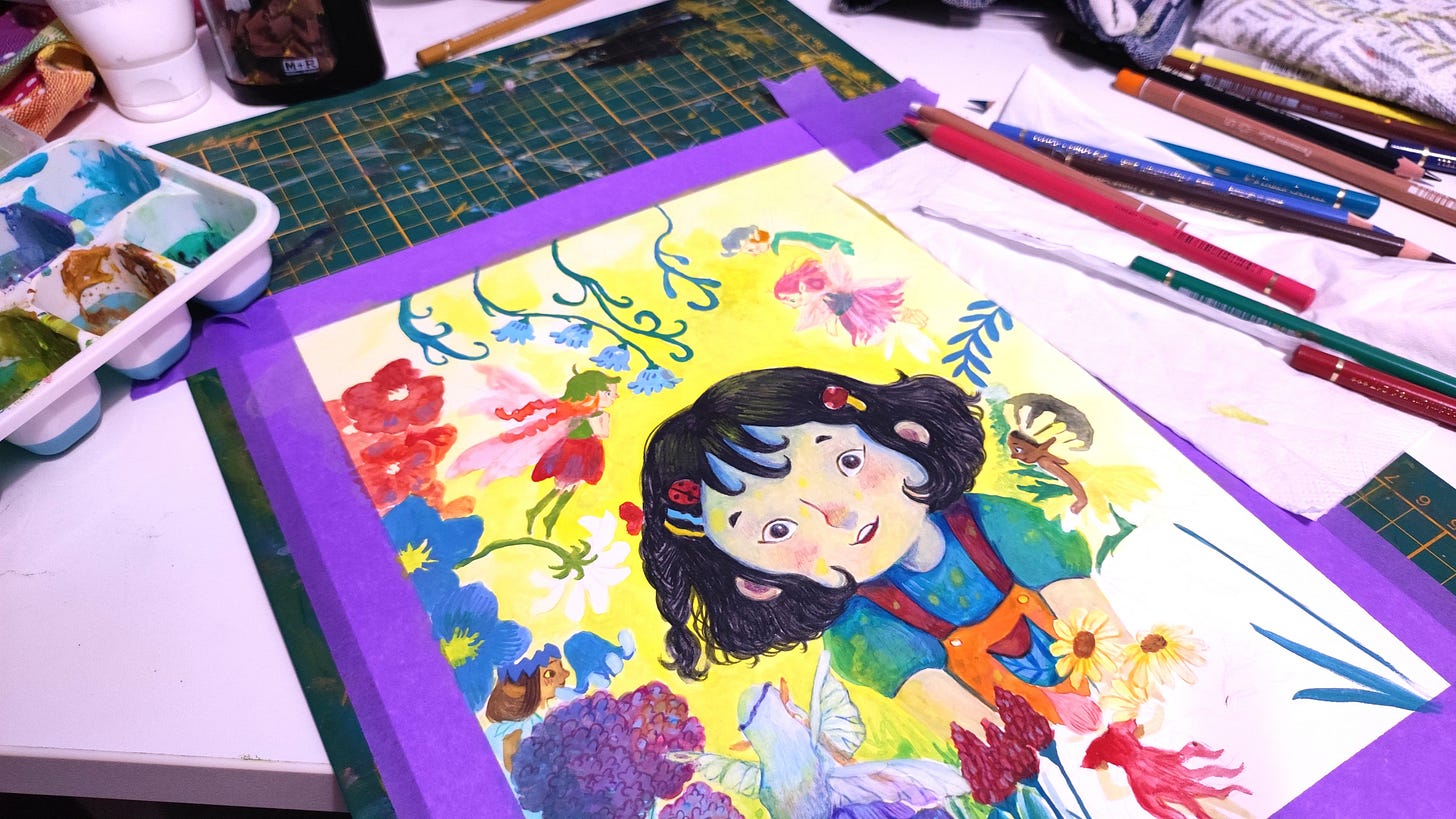
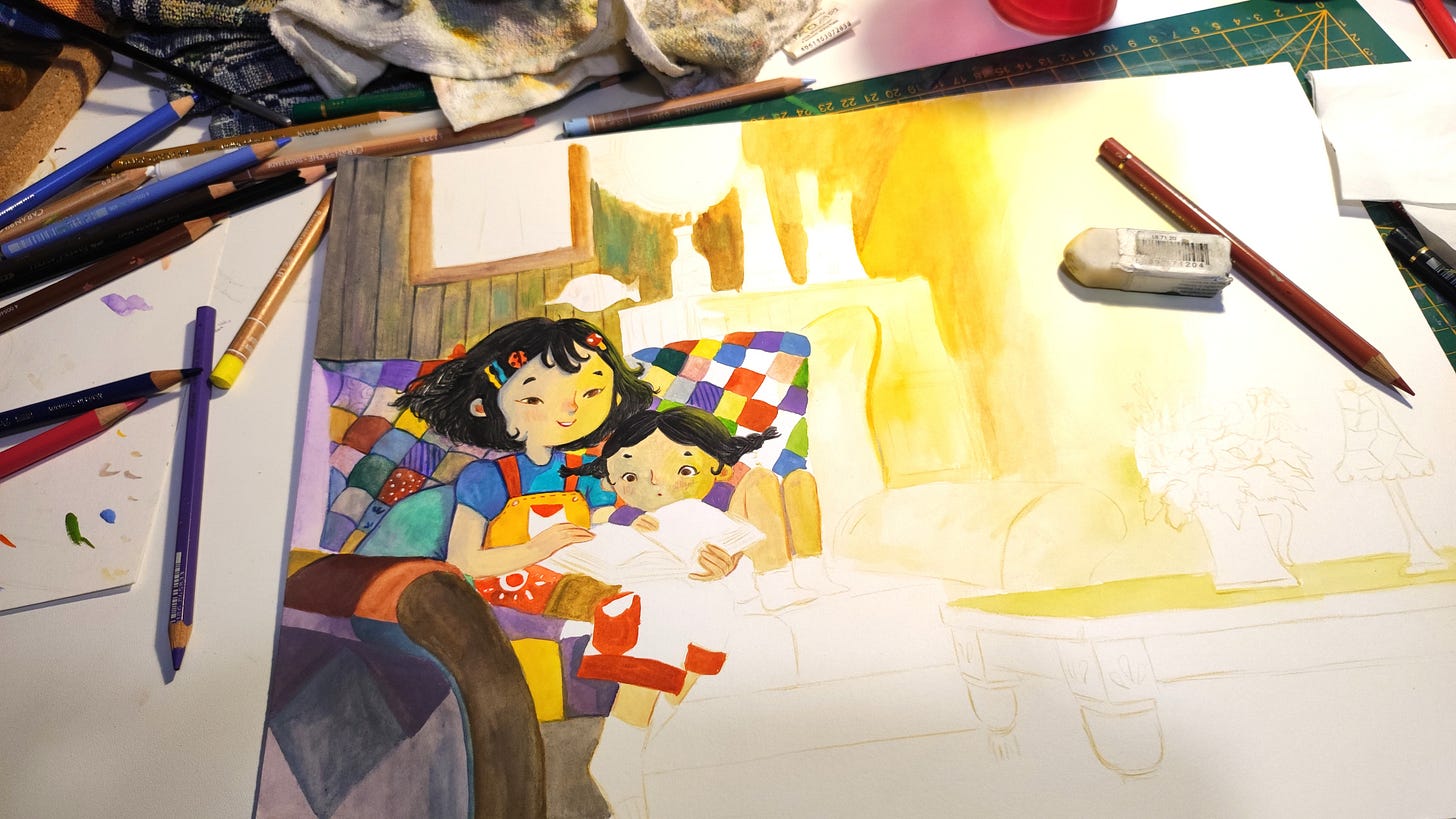
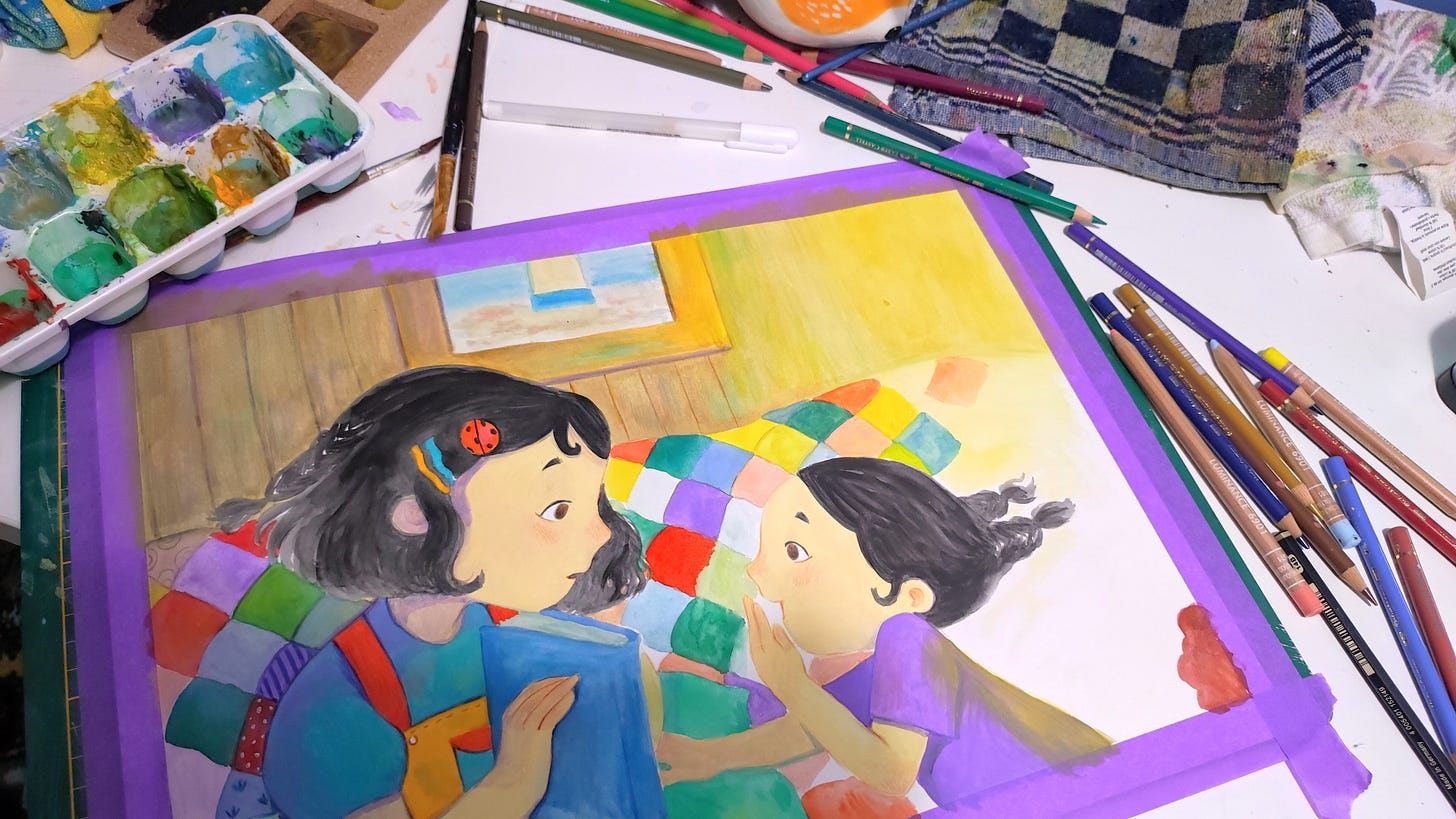
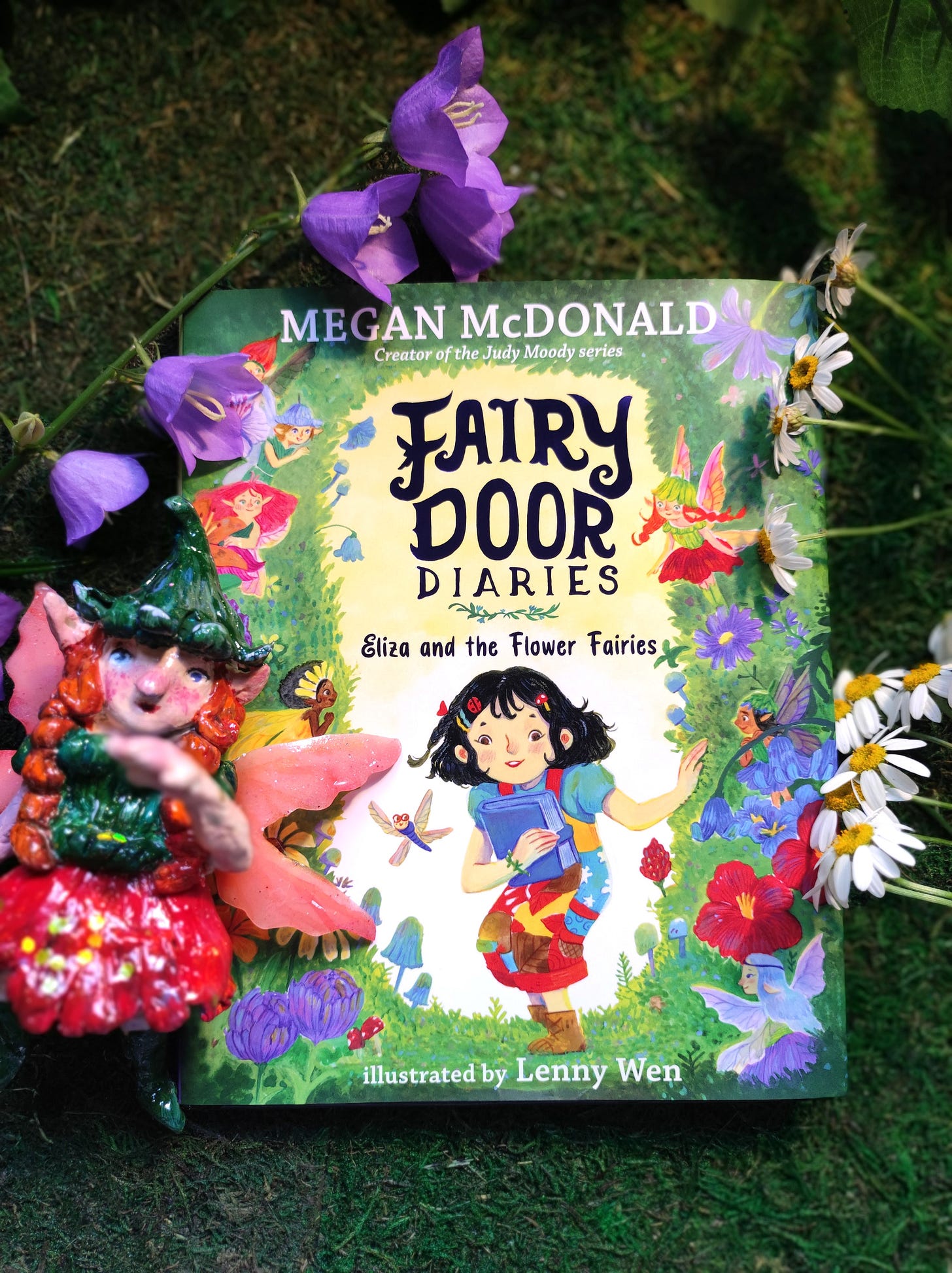
Kak Lennn.. thank you so much for sharing this heartwarming story! This is very related to my current situation. Studying traditional illustration isn't that easy. But i'll keep the fight 😂
Great article and things to ponder. There should not be issue with using digital to tweak your traditional work whether for a job or for personal work. Its all just tools. And many can save you from having to redo a whole illustration. I have to work on the precious aspect of my art. That too keeps me from creating sometimes. And congrats on your new book!